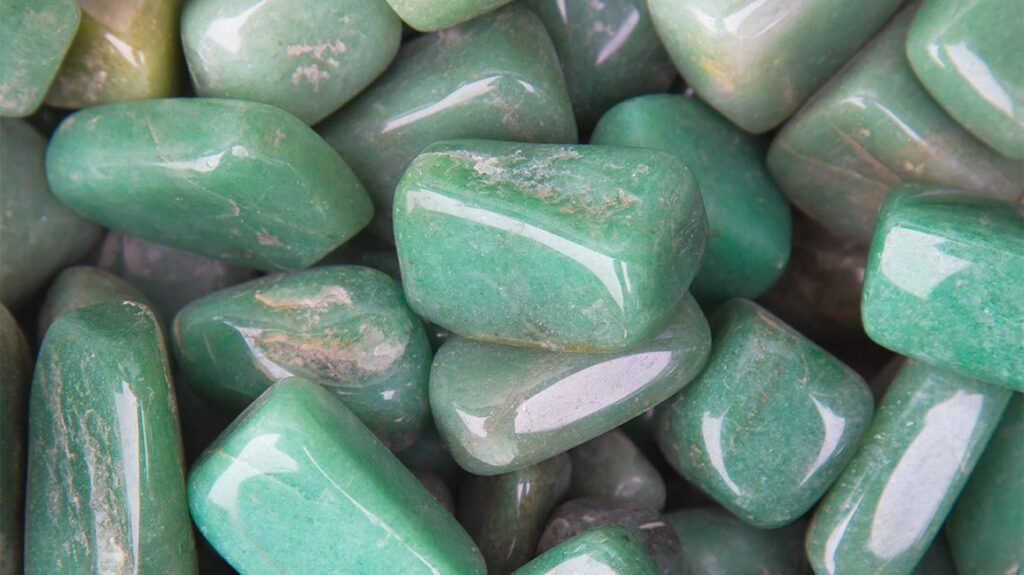Uses of Jade in Feng Shui

Types of Feng Shui Jade
Feng Shui Jade is a semi-precious gemstone that comes in two main types: nephrite and jadeite. Nephrite is the more common and less valuable form of jade. Nephrite is found in mid to dark green, while rarer colors of nephrite include white and orange. Jadeite, meanwhile, is prized for its translucent quality and comes in many shades of green, even a highly sought-after lavender. Some of the rarest examples of jadeite have been described as “moss entangled in melting snow.”
The crystalline structure of the two stones also sets them apart. Nephrite is made up of fibrous crystals that interlock in a matte texture, while jadeite is made up of grainy crystals that are densely packed. Jadeite’s harder, denser structure shines and can be delicately carved into intricate designs. Nephrite is the stronger of the two and is generally used for simpler carving and applications.
The Qualities of Jade
Found in shades of deep green, translucent lavender, creamy white, and orangey-red—each color with its own meaning and symbolism—jade have been revered for centuries across East Asia. They’re one of the oldest collected and cherished gemstones.
Jade is a stone that is sought after for its luminous quality and luster. In many historical texts, the best quality jade is described as having a “greasy” smooth quality. The sound and ring a piece of jade makes when tapped is also an indication of quality. A higher-pitched ring means it is a higher grade or quality. The rarer examples of jade with colors such as “spinach” green mixed with cloud-like whites are reminiscent of nature and traditional Chinese paintings. The best quality jade is cool to the touch when first picked up, often described as an ice-cold touch.
The Power to Protect
In China, jade is considered to be a living stone. It is from the earth, but its luminous quality is like sunlight and the stars: it is a connection between heaven and earth’s realms. Many pieces and examples of jade are described as being yin or yang, depending on the color. Like all things from nature, Jade is imbued with qi, the life force that flows through and around all living things.
The Colors and Meaning of Jade
The colors of jade are also connected to Taoist cosmological systems. Lighter and more translucent jade is considered to have softer energies and is referred to as being yin. Deeper green and more opaque versions of jade are said to have stronger, bigger energy, and therefore more yang. For example, the deeper dragon-green veins are yang and represent overcoming adversity and living a better life.
The colors themselves are connected with the five-element system used in both feng shui and traditional Chinese medicine. Green jade is related to the liver, health, healing, and longevity, and green is connected to the wood element. Red jade (also called hong red) is related to the heart, love, joy, and the fire element. White jade is related to the lungs for calming, clear purpose, and the metal element. To find a piece of jade that combines more than one color increases the stone’s value. For example, a bracelet with all three colors (red, green, and white) is called the auspicious Fu Lu Shou, named after the three Gods of Happiness, Wealth, and Longevity.
Jade for Good Feng Shui
Jade can be a stone that you include in your home to improve the feng shui. There are many different types of applications, from statues, carvings, and tumbled pieces. As an object, jade can be placed in your home to support and strengthen your qi (life force energy).
However, not all feng shui is for your home—it can also be on your body. Wearing a piece of jade jewelry is believed to help clear the meridians of the body. For example, when wearing a jade bangle, it is better to wear it on your left wrist, closer to your heart. Jade jewelry is also said to protect the wearer from injury and take the brunt of unwanted energies.
If you own a piece of jade, it should be worn and not kept away in a drawer. It is a living stone with qi, and if it is not worn, it will become lifeless and brittle.
